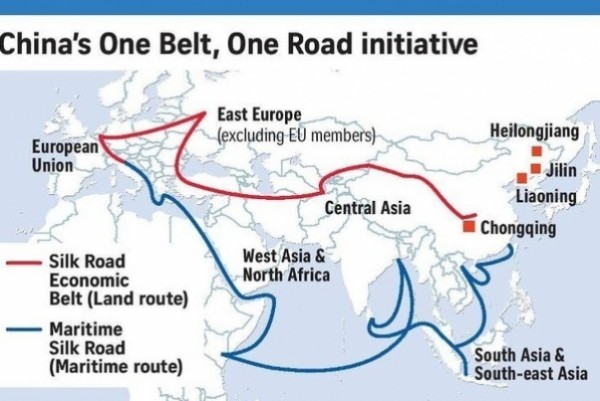| “Belt and Road” has been dramatically shaping up in 2017 | |

| Author: Matej Balen |
| 30th December 2017 |
| BEIJING - Fourth year of China’s Belt and Road initiative is now in books. Currently estimated at USD 1 trillion worth, the biggest investment project ever started by a single country outside of its borders has been gradually developing over the first three years, and has finally taken shape in 2017. |
|
Proposed by China's president Xi Jinping, massive infrastructure and development projects across Asia, Africa and Europe have started in 2013, focused on connectivity and cooperation between member-countries and China. At first vague concept has brought doubts, especially in the West, but over time the initiative has started creating new markets, forging ties, creating economic connections and stronger diplomatic relationships. The biggest strength in the initiative is strong commitment from Chinese Government to development in various areas and industries along the Silk Road countries. And results have never been more visible, as confirmed a few days ago when China’s top economic planner stated that more than 65 member countries have signed hundreds of cooperation agreements under the Belt and Road till now. All of this has been achieved at tremendous cost – current estimates vary, but the value of the sum invested has been measured by experts at around USD 150 billion a year. This figure covers investment in overland links – like roads, railways and pipelines – and new terminal and port infrastructure, and other development projects along the route. And at a countries as diverse as Pakistan, Vietnam, Greece, Serbia and the Netherlands, with very different economic situation and regulations. He Lifeng, head of the National Development and Reform Commission (NDRC) said the initiative made major headway in 2017, citing progress in key areas including capacity, investment and the Digital Silk Road. Steady progress was made in the building of the China-Pakistan Economic Corridor, putting into operation the Mombasa-Nairobi railway, beginning of construction of the Belgrade - Stara Pazova section of the Hungary-Serbia railway and the Khalifa Port in the United Arab Emirates, and the operation of the Hambantota Port, said He. But perhaps the biggest political demonstration of the Belt and Road also happened in 2017. The first Belt and Road Forum was held in Beijing in May, that brought together 28 heads of state, 100 lower-level government officials, dozens of major international organizations, and 1,200 delegates from various countries to talk about the future of the Belt and Road. During the forum many deals were signed, and president Xi said that 68 countries and international organizations have signed Belt and Road cooperation agreements, while 270 major achievements have been made in the first four years under the initiative. He also announced that the next Belt and Road Forum will be held in 2019, and pledged additional USD 124 billion in new funding. In the coming 2018, China will focus on the implementation of agreements reached at the Belt and Road Forum in May. In 2017, Central and Eastern European countries (CEECs) are also "responding more energetically" than in previous years. During a visit by Chinese Premier Li Keqiang to Hungary in November of this year, Chinese leadership confirmed that China – CEEC cooperation have matured and cumulative investment into the 16 CEE countries have already exceeded USD 9 billion while CEEC invested 1.4 billion dollars in China. In the financial sector, China established the 10-billion-dollar China-CEEC Investment Cooperation Fund and it has already invested in 12 projects in five CEE countries. At the end of 2017, the Belt and Road initiative covers 65 countries, 4.4 billion people and over a third of the world’s GDP.
|